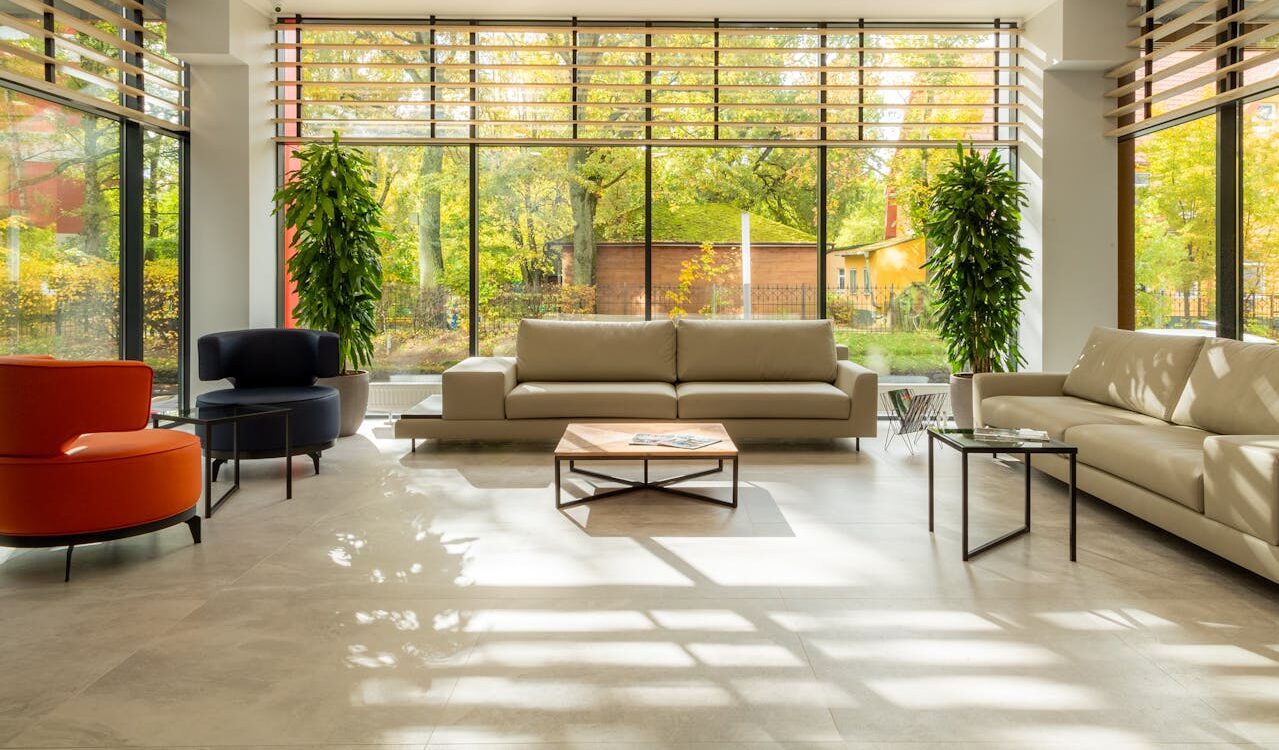Different marble-floor/”>marble-floors/”>marble-restoration-in-miami/”>marble-floor/”>marble-and-granite/”>marble/”>marble/”>types of Landstone Floors
Introduction
Landstone floors have become popular for homeowners and commercial properties thanks to their durability, natural beauty, and timeless appeal. Whether you’re looking to enhance the elegance of a classic setting or create a contemporary space with rustic charm, landstone floors offer a versatile solution that suits various styles and preferences.
This article will explore the different types of landstone floors, their unique characteristics, benefits, and best use cases to help you make an informed decision.
1. Limestone Flooring
Limestone flooring is a natural stone with a soft, muted color palette ranging from creamy whites and beiges to warm greys and tans. Its subtle veining and consistent texture make it ideal for creating sophisticated and elegant spaces.
Benefits:
- Natural beauty and uniqueness.
- Durable and long-lasting.
- Eco-friendly material.
- Easy to maintain.
Best Uses:
- Interior flooring for living rooms, kitchens, and hallways.
- Exterior pathways and patios with proper sealing.
2. Sandstone Flooring
Sandstone flooring is characterized by its earthy tones and natural texture, making it a popular choice for rustic and outdoor settings. This sedimentary stone offers a rugged yet refined look that blends well with natural surroundings.
Benefits:
- High durability and slip resistance.
- Unique grain patterns.
- Suitable for high-traffic areas.
 floor/”>marble and granite restoration” class=”wp-image-230″/>
floor/”>marble and granite restoration” class=”wp-image-230″/>Best Uses:
- Outdoor patios, garden paths, and poolside areas.
- Indoor spaces with a natural or rustic design.
3. Travertine Flooring
Travertine is a form of limestone that develops through mineral deposits from natural springs. It offers a luxurious, classic appearance with a textured surface that adds character to any space.
Benefits:
- Elegant and sophisticated appearance.
- Naturally slip-resistant.
- Variety of finishes (honed, polished, tumbled).
Best Uses:
- Bathroom floors, shower walls, and backsplashes.
- Living rooms and interior corridors.
4. Marble Flooring
Marble is a highly sought-after natural stone known for its luxurious appearance and striking veining patterns. It brings a sense of grandeur to any space, enhancing both classic and modern aesthetics.
Benefits:

- Timeless beauty with unique veining.
- Adds value to properties.
- Available in various colors and finishes.
Best Uses:
- Interior flooring for foyers, living rooms, and bathrooms.
- Accent walls and countertops.
5. Slate Flooring
Slate flooring is a durable, water-resistant natural stone in various dark and earthy tones. Its unique texture and composition make it ideal for indoor and outdoor applications.
Benefits:
- Highly durable and long-lasting.
- Naturally slip-resistant surface.
- Low maintenance requirements.
Best Uses:
- Entryways, kitchens, and bathrooms.
- Outdoor pathways and patios.
6. Basalt Flooring
Basalt, a volcanic rock, offers a sleek and modern look with its deep, dark color and smooth texture. It’s perfect for minimalist or industrial-style designs.
Benefits:
- High durability and heat resistance.
- Elegant, contemporary appearance.
- Low porosity when adequately sealed.
Best Uses:
- Indoor mexican-tile-floors/”>flooring for modern spaces.
- Fireplace surrounds and countertops.
Conclusion
Landstone flooring has many varieties, each with distinctive qualities and aesthetic appeal. From the luxurious elegance of marble to the rugged charm of sandstone, there’s a type of landstone floor to suit every style and purpose. By understanding each type’s unique characteristics and advantages, you can select the perfect flooring option to elevate your space and enjoy its beauty and durability for years to come.

No responses yet